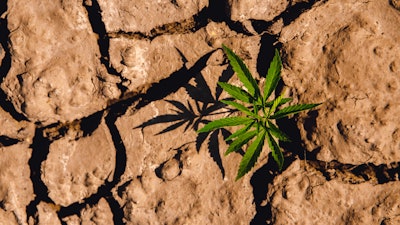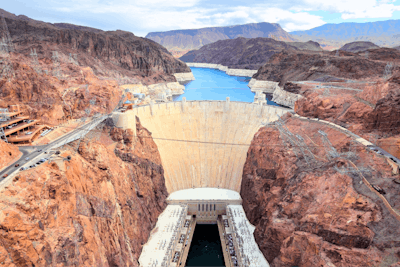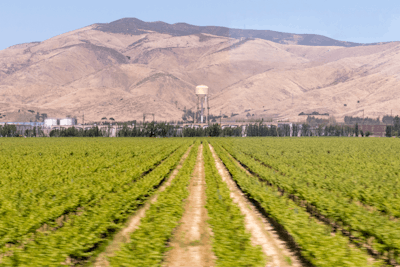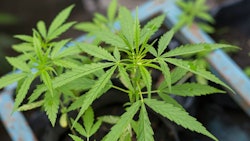
Back in 2017, I posted information on social media regarding a feature documentary titled “Water and Power: A California Heist” by National Geographic. The documentary details the stark contrast between how powerful corporations and impoverished citizens are affected by water shortages in the state.
Fast-forward to today. California is the world’s fifth-largest economy, and poised to surpass Germany to become the fourth-largest economy in the near future, according to Bloomberg. More than a quarter of the United States’ food is grown in California’s Central Valley alone, according to the documentary and the U.S. Geological Survey. And in this mecca of agriculture, cannabis is California’s fifth-largest crop as of November 2021. For the first three quarters of 2022, California’s government reported nearly $853 million in cannabis tax revenue.
Yet, California is experiencing severe water scarcity. It is entering its fourth consecutive year of drought. On a broader scale, the Western and Southwestern regions of the U.S. are in the midst of what has been termed a “megadrought,” a drought period spanning 20 years or more.
The 2022 growing season for cannabis cultivators gave operators an idea of what to expect in the likelihood that drought continues. In Humboldt County, some cannabis growers shared on Instagram that they had insufficient amounts of water and had to abandon greenhouses full of immature plants. Others were fine with working wells and/or reservoirs, while the less-fortunate had to rely on water delivered by truck. I’ve also heard of many cannabis growers in Grass Valley (near Sacramento) needing to have water delivered.
With the future of the agriculture industry on the line, it is essential for both growers and state and local governments to address water scarcity quickly. But this problem is neither new nor an easy fix.
Water Wars in California
The term “California water wars” is not a novel manifestation or concept of today’s global climate change or megadrought. In fact, California’s water wars date back to the early 1900s, when a man named William Mulholland went on a quest to provide water to a rapidly expanding Los Angeles—a quest that ended in tragedy when a dam he facilitated the construction of collapsed, resulting in hundreds of deaths. The 1974 movie “Chinatown” was inspired by these water wars and depicts the ruthlessness by which Los Angeles strong-armed water rights in the Owens Valley.
Stewart and Lynda Resnick, who own The Wonderful Company—the parent company of POM Wonderful—are two business owners featured in the National Geographic documentary. POM Wonderful produces pomegranate juice, pistachios, almonds, citrus and the branded FIJI Water. They also own Justin Vineyards in Paso Robles, which just happens to sit on the deepest point on the region’s most valuable aquifer.
POM Wonderful consumes more of the state’s water than any other family farm or company, the documentary points out. And, according to a 2016 article published in Mother Jones, “They control more water in some years than what is used by the residents of the entire San Francisco Bay Area and Los Angeles combined.” As Mother Jones reported, they own more than 140 square miles of orchards and use approximately 117 million gallons of water per year. They also have immense political influence and control a majority stake in the Kern Water Bank, a property in the Southern San Joaquin Valley where water is stored during wet years and recovered during dry years.
Switzerland-based Nestle, as another example of a corporation consuming large amounts of water, siphons approximately 58 million gallons of water out of California’s San Bernardino forest each year, as reported by The Guardian, which it uses for its Arrowhead brand water, a precious resource also used by local ecosystems and communities.
How is it legally possible for a corporation to take large amounts of water from a drought-prone area, bottle it and sell it back to the citizens? It’s because they secured the water rights legally, which gives them control indefinitely.

Water Sources
Most think California water comes from California, but it actually comes from multiple sources. For example, California is the leading user of Colorado River water at 27%. Colorado, meanwhile, gets 23%, while the rest gets messy—and about 9% is allocated to Mexico. The Colorado River supplies roughly a third of all water for Southern California cities and suburbs. The river also provides between a quarter and a third of the region’s water supply.
State officials and lawmakers have several proposals to attempt to alleviate the water shortage in California, including a plan to route water from the Sacramento River in the northern part of the state to the drier parts of the state where much of the state’s agriculture industry is housed via an underground tunnel. The plan has been debated and revised for nearly half a century, according to a CBS News report, with the latest version suggesting one tunnel instead of two to reduce environmental damage, though critics say it could still threaten salmon and other species and reduce water supply for northern residents.
California is also planning the first reservoir constructed in 43 years—the Sites Reservoir, a $4 billion project planned for the Sacramento Valley that will eventually capture water during wet periods—as well as expanding several others.
Besides that, California’s water storage capabilities are currently outdated and dilapidated, requiring significant maintenance, which will require billions of dollars and a concerted effort with an eye on priority. Heading into 2023, the state is using block grants to pay farmers who meet eligibility requirements to limit water use or in some cases, not plant crops at all.
Looking Beyond California
While California is just one example, albeit one that is an economic juggernaut and has a very long history with both cannabis and droughts, California growers are not the only cannabis cultivators at risk because of water scarcity.
In Colorado, drought conditions are beginning to affect water supplies, as well. The Colorado River is currently at a historic all-time low. Arizona also depends on 17% of allocated Colorado River water. Lake Powell and Lake Havasu, which also supply Arizona, are at historic all-time lows, too. In Nevada, Lake Mead also is at an unprecedented low—so low that for the first time ever, the Hoover Dam’s ability to generate electricity is in jeopardy.
The water crisis is not limited to the states we hear most about; for example, the underground water supplying large farms in West Kansas has been depleted, according to NPR reporting. I suspect other states will soon question where their water will come from in the absence of rainwater. And with cannabis production still being stigmatized and federally illegal, it will likely garner a low priority status regarding water allocation in the near future, with no relief from the government in sight.

Potential Solutions
With the longevity of the agricultural and cannabis industries at stake, things could get ruthless. There are reports of “well wars” taking place in California by both corporations and citizens trying to save their family’s land, where landowners continue to drill deeper so that the owner of the deepest well receives the lion’s share of whatever water is available.
However, as this column goes to press, atmospheric rivers, when large amounts of water vapor are concentrated in the sky and produce a deluge of water, are drenching California, flooding inland and central areas stretching from the southern to the northern regions of the state, and pose a risk to other western states. It’s not necessarily replenishing dry land, either, as vegetation has long been compromised by decades of drought, and the state’s system of dams and reservoirs can only capture a certain amount of water at a time.
What does all of this mean for a commercial cannabis producer located in a drought-stricken state, and how do they survive going forward? A few water-saving solutions producers can consider during production include:
- implementing a water-saving irrigation system;
- recycling all water;
- utilizing solar panels over reservoirs to minimize water evaporation;
- utilizing shade balls that float on top of a reservoir to slow evaporation of the water and minimize algae growth.
Unfortunately, any major improvements lie outside of a cultivator’s hands, and instead rely on large-scale solutions.
There are two choices: Address the situation or ignore it. Ignoring it would spell catastrophe, but how to properly address it is the main question—especially with the many considerations and resulting implications.
A modern-day “moonshot” is needed to alleviate the lasting effects of water scarcity. If it were up to me, I would utilize the materials and manpower that was once the Keystone Pipeline or an underground aqueduct capable of transporting water nationwide from areas of abundance to areas of drought, which would employ hundreds of thousands with very skilled, high-paying jobs.
Constructing more reservoirs, without damaging the environment, needs to be a priority. This could also benefit and restore wetlands and create new stopover locations on the Pacific Flyway (a north-south migration path for birds), which would foster waterfowl as well as recreation. Doing so would have a multitude of significant benefits, such as the restoration of Owens Valley, which has been a source of Los Angeles water since Mulholland set his eyes on it back in 1904.
Solutions are also needed to prevent dust storms—another potential impact of drought that could affect not only agriculture, but also daily life in the West.
The Salton Sea, a key stopover for migratory birds on the Pacific Flyway and once a very popular and prosperous recreation destination called “The California Riviera,” is a modern-day nightmare (and another consequence of Mulholland’s development in Los Angeles) that is poised to rear its ugly head in the form of dust storms that contain contaminants from agricultural runoff from Imperial Valley farms of yesteryear.
By the 1970s, the sea had increased in salinity due to agricultural runoff, destroying bird habitat. The reduction of irrigation runoff then caused the sea to shrink and expose the contaminants on the dry seabed, which worsens air pollution dramatically as the wind blows across it. Conditions are currently worsening and are expected to affect millions in Southern California and parts of Arizona, depending on wind direction. It is expected to make Palm Springs, Calif., a dangerous place to live, as well as many others. In 2017, the California government released a 10-year plan to manage the adverse effects of the Salton Sea, and hosted public comments on the Draft Environmental Assessment, but the U.S. Army Corps of Engineers is still reviewing the effects of implementing the program.
Many will ask, who is going to pay for this? Some may question the exorbitant amount of money needed for these various projects and the taxpayer dollars necessary to fund it. But the truth is, the fifth largest economy in the world that supplies much of the nation’s food is in a crisis, and solutions need to be prioritized by politicians and citizens. This is not a red or blue issue nor limited to the cannabis industry—this is a national calamity, which, if not soon addressed, will result in a decline of our civilization.


























